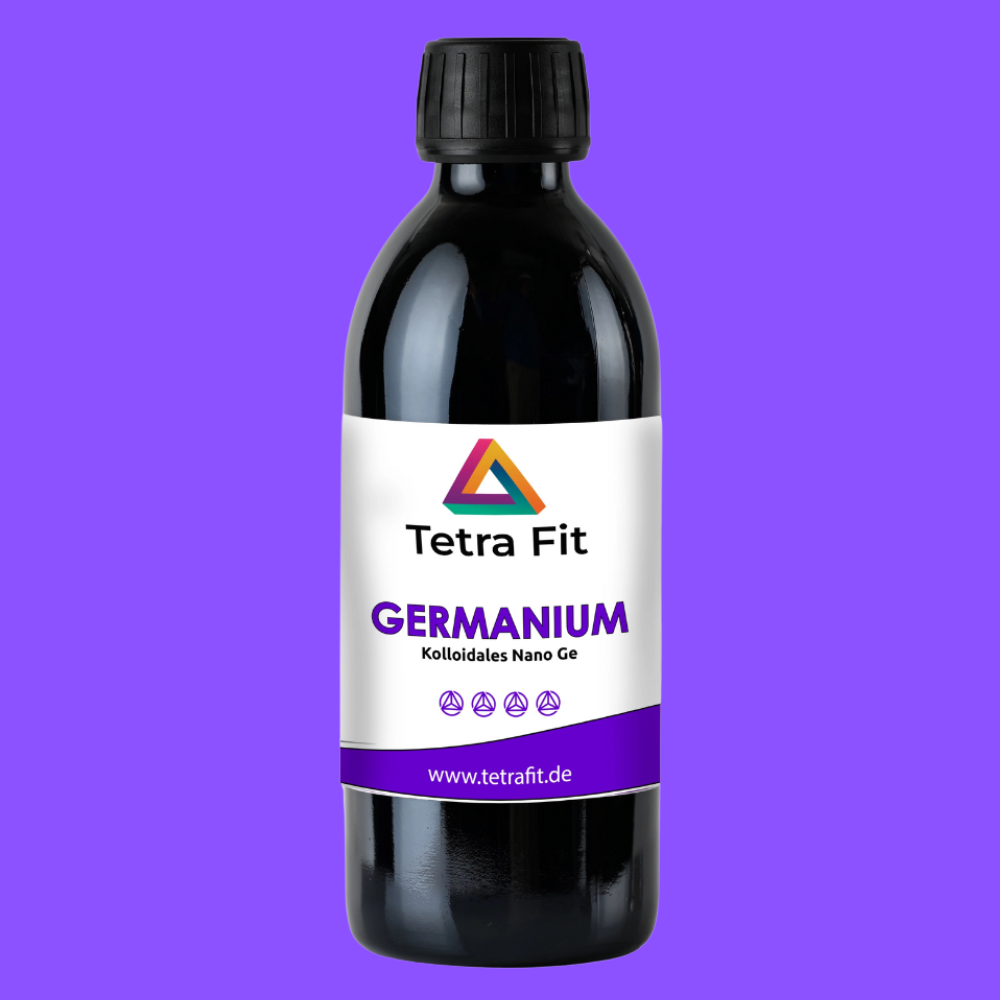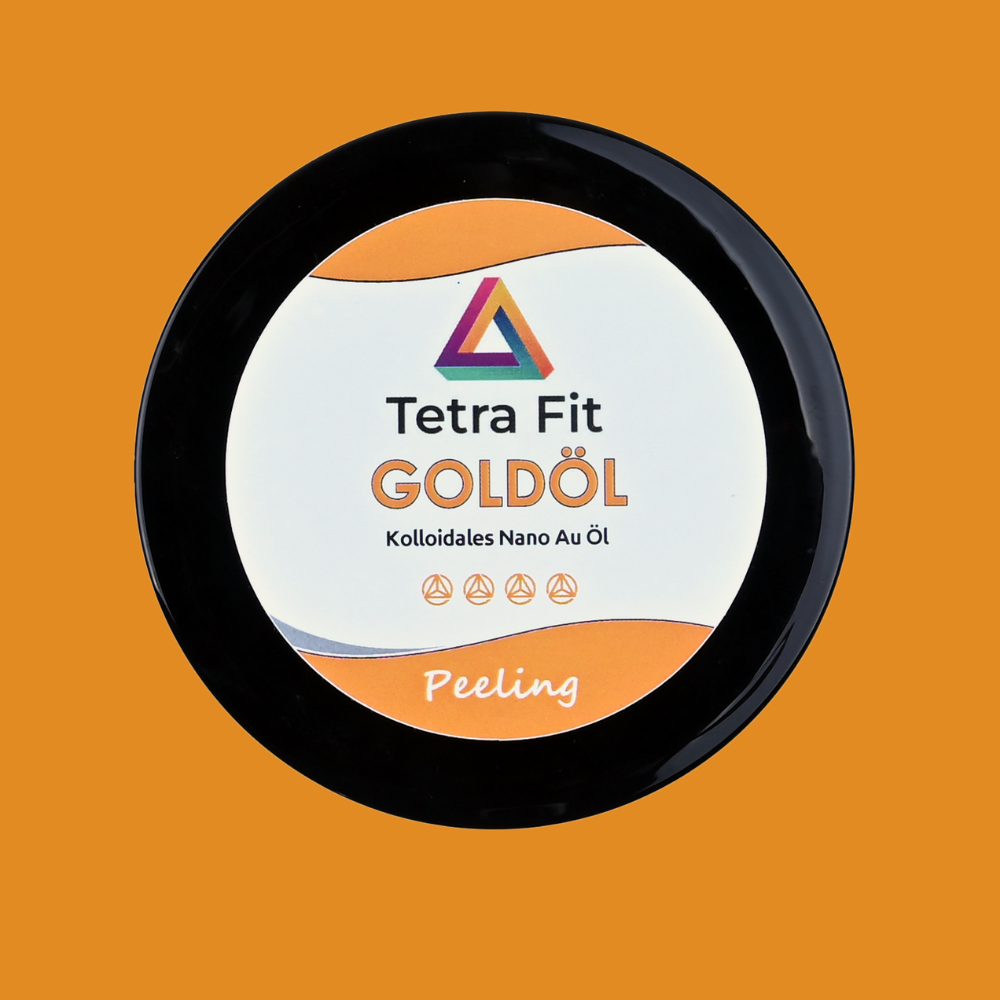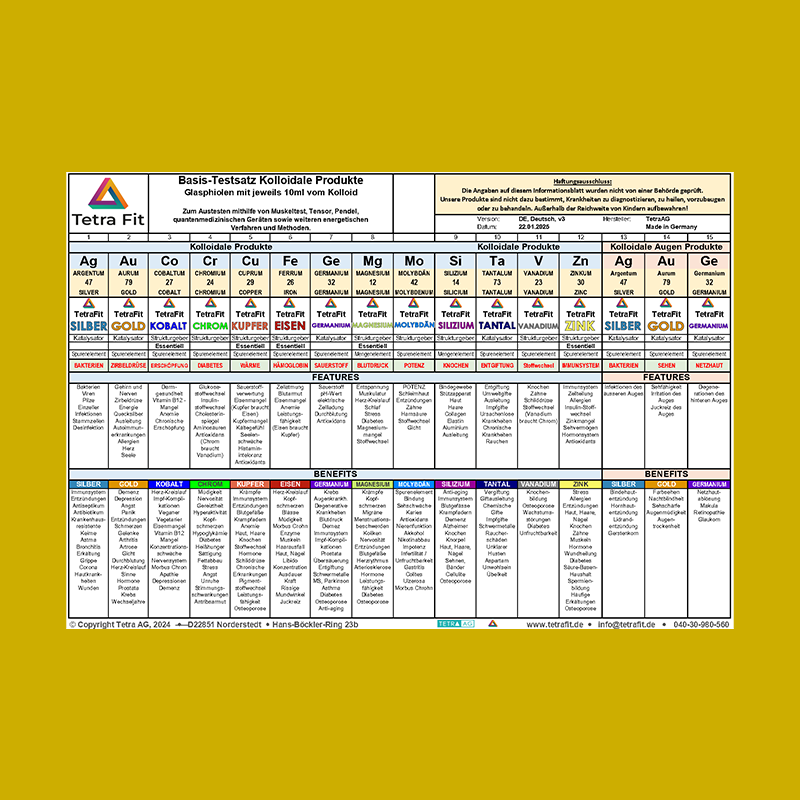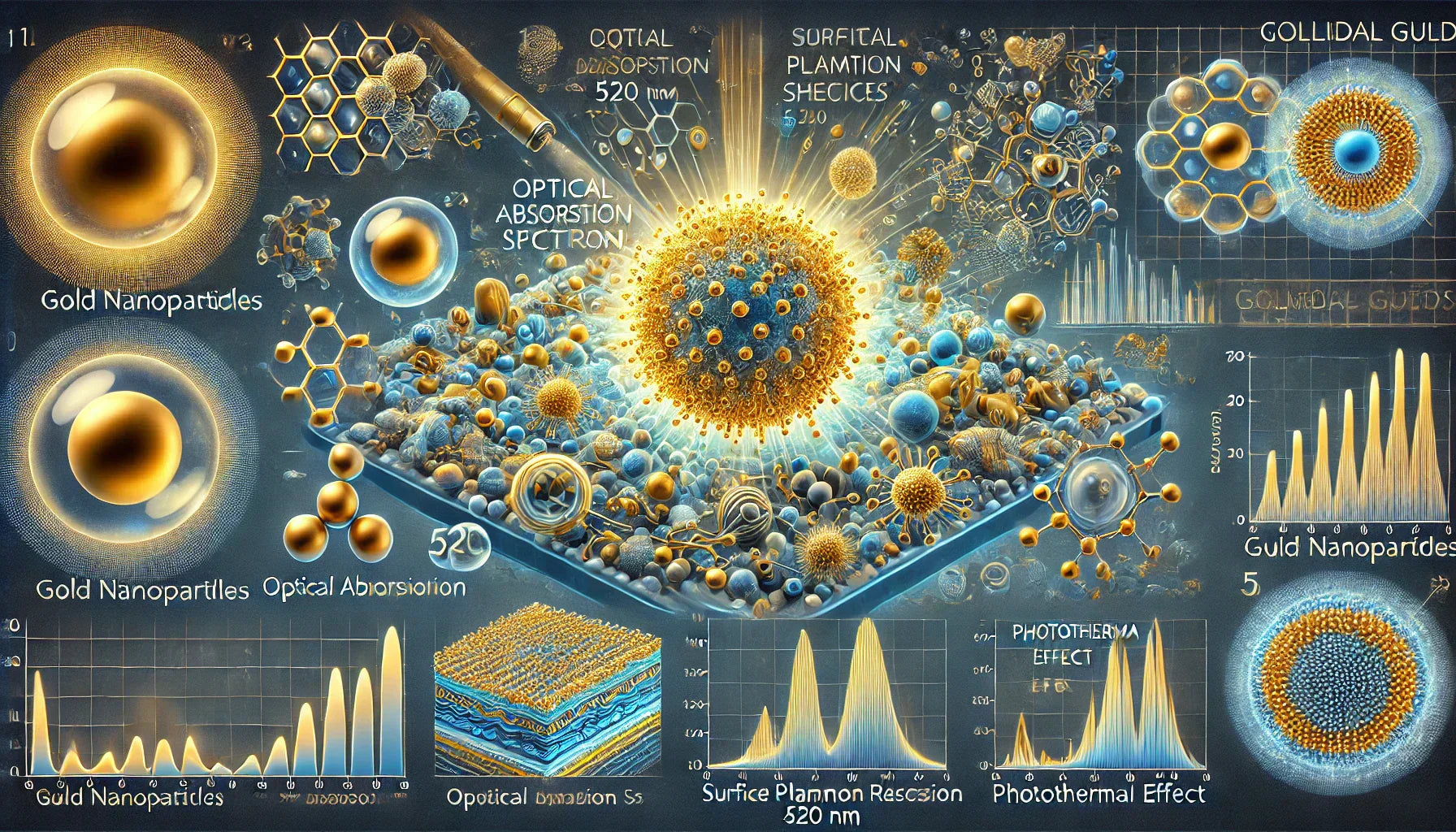Mathematical Consideration of Colloidal Nano Gold
Colloidal nano gold (gold nanoparticles, AuNPs) is being studied in medicine and biology because of its potential anti-inflammatory, antioxidant and cell-stimulating properties. The scientific effects can be described mathematically using various models.

1. Optical properties: plasmon resonance
Gold nanoparticles exhibit surface plasmon resonance (SPR) , which is important for their bioactive effect. The absorption and scattering properties can be described by the Mie theory :
with:
- = extinction cross section (total light interaction),
- = absorption cross section,
- = scattering cross section.
The plasmon resonance frequency the nanoparticles is:
with:
- = electron density,
- = elementary charge,
- = electric field constant,
- = electron mass.
Meaning:
- SPR leads to the generation of reactive oxygen species (ROS), which can have antioxidant or oxidative effects.
- This resonance enables the use of colloidal gold for targeted medical applications (e.g. in cancer therapy).
2. Interaction with biological cells
Gold nanoparticles interact with cell membranes through electrostatic forces. The uptake into the cell can be described by the Langmuir kinetics :
with:
- = degree of coverage of the cell membrane by nanoparticles,
- = concentration of nanoparticles,
- = adsorption rate,
- = desorption rate.
Solution of this equation:
Meaning:
- Shows how quickly and in what quantity colloidal gold is absorbed by cells.
- The absorption rate depends on the particle size and charge.
3. Influence on cell reactions: Oxidative stress
Gold nanoparticles can act as an antioxidant by neutralizing reactive oxygen species (ROS) or generating them through plasmon effects. The ROS concentration in the cell can be modeled by a differential equation:
with:
- = ROS production rate (depending on gold-nanoparticle interaction),
- = Elimination rate by cellular antioxidants.
Solution:
\left(1 - e^{-k_{elim} t} \right)
Meaning:
- At low -Rate, colloidal gold can act as an antioxidant.
- At high rate, it can induce oxidative stress, which can trigger cell damage or apoptosis.
4. Heat effects: Photothermal therapy
Gold nanoparticles can be excited by infrared light, causing them to generate heat. The temperature increase due to absorbed light energy follows:
with:
- = density of the medium,
- = heat capacity,
- = volume of the treated area.
Meaning:
- This is used in cancer therapy to specifically destroy tumor cells.
- The higher the particle concentration, the greater the photothermal effect.
Summary:
- The plasmon resonance of colloidal gold plays a central role in optical and therapeutic applications.
- Uptake into cells can be modeled using kinetic equations.
- The antioxidant or oxidative effect can be described using ROS dynamics.
- Photothermal effects can be predicted by energy absorption models.
Colloidal gold is therefore a promising material with complex biological interactions that can be described precisely mathematically.







Leave a comment